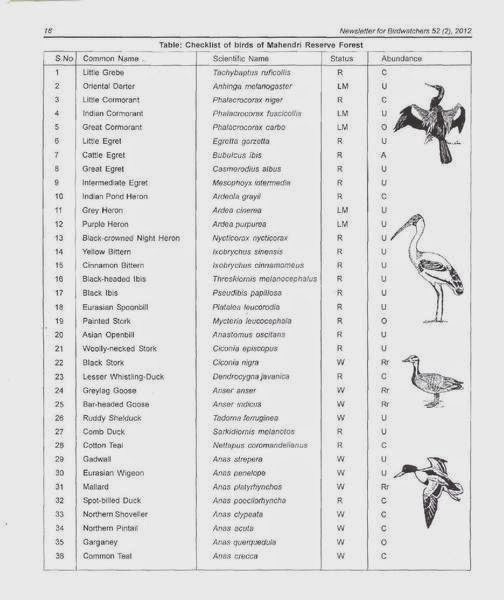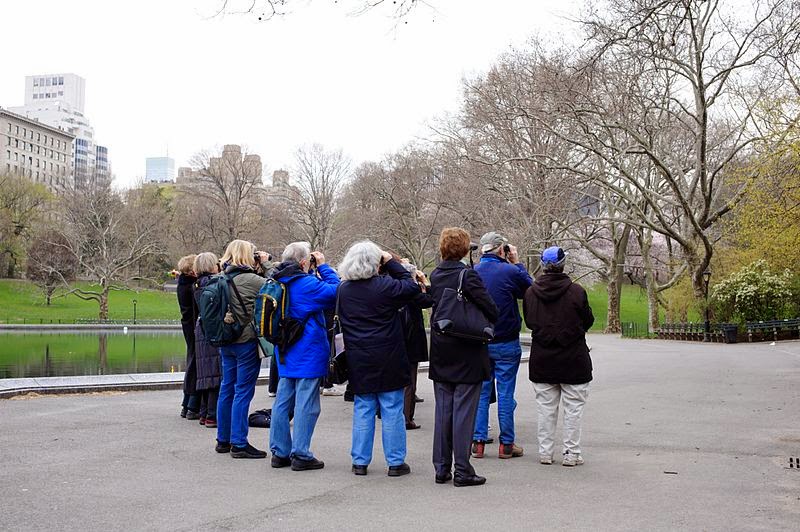In order to properly delve into the topic of birders, we first need to build our birder-watching identification skills. How do you tell the difference between a data-collecting ornithologist and a camera-wielding bird photographer? Can you spot which birder is just there to cross that "lifebird" (a species you've yet to see in your lifetime) off her list and which would stop to observe his hundredth cactus wren? (my own birder falls into the latter category.) Despite the seemingly discrete categories outlined here, the cultural anthropologist in me eschews such delineations in favor of a subjective, flexible understanding to human identities. (My fancy way of saying to you birders out there - I mean all this tongue-in-cheek!). Furthermore, these types tend to blend into one another: for instance, I have dabbled in Listing and Photographing, and will possibly one day graduate to a Retiree-birder (more a fear of impending fate than life ambition).
But before we get to these classic archetypes, let's explore some historic birder varieties (and in the process, imagine THEIR spouses and significant others!)
1. The Augur
 |
| (bible-history.com) |
Description: Male, characteristic long robes, high position within society
Geographical Range: Ancient Rome and vicinity
Status: Extinct (except, perhaps at the Renaissance Fair)
2. The Falconer
 |
| (Public Domain, Wikimedia Commons) |
Description: Primarily male, bird poop on shoulder.
Geographical Range: All over the ancient and modern world.
Status: Endangered
3. The Pigeon Fancier
 |
| (Bundesarchiv, Bild 183-W0212-035 / Kaufhold, Reinhard / CC-BY-SA) |
Description: Highly varied, but similarities in housing design to allow for bird flocks.
Geographical Range: Abundant throughout the world going back 10,000 years ago.
Status: Plentiful
* * * * *
And now for a modern look at birding types. See if you recognize any signs in your own birder spouse!4. The Photographer
 |
| (Photo by author) |
Description: Varied, always toting camera with multiple lenses.
Geographical Range: Abundant all over.
Status: Plentiful, especially as camera technology becomes more advanced and equipment cheaper.
5. The Lister
 |
| (Wikimedia Commons) |
Despite my reluctance to bird, I've realized in recent years that this is the closest I get to a birder. Listers have a sole mission: see every possible bird species in a given area and write them all down. They usually carry around field guides with pages in the back that allow for a tally mark next to each species seen, or alternatively, a checklist from a nearby Visitor Center listing all the birds in a particular national park or forest. Many other birder types, such as The Retiree or The Naturalist, resent The Listers myopic attitude towards bird watching.
Description: Characterized by a field guide or checklist in hand, as well as a pen or pencil. Moves quickly throughout a given area, rather than lingering on individual birds.
Geographical Range: Most abundant in parks, near Ranger's Stations where checklists are available.
Status: Invasive (Shout out to Stacy Rosenbaum).
6. The Retiree (aka Woman in Tennis Shoes)
 |
| (Wikimedia Commons) |
Description: Usually female, but not exclusively. Wears tennis shoes and comfortable clothing. Carries binoculars. Has gray hair.
Geographical Range: Abundant all over, but primarily seen in parks with easy accessibility for the elderly.
Status: Plentiful.
7. The Overly Precocious Child
 |
| (Public Domain, Wikimedia Commons) |
Description: Young, wears outdoor/safari gear, verbose.
Geographical Range: Abundant in urban parks and in areas where family vacations are common.
Status: Uncommon, but on the rise.
8. The Twitcher
 |
| (Bird Blind, Photo by Mick Garrett) |
Description: Twitchy.
Geographical Range: Abundant in Britain, where bird enthusiasts abound and the term originates.
Status: Plentiful in Britain, scattered elsewhere.
9. The Scientist
Subtype A) The Naturalist-Pacifist
 |
| (Bundesarchiv, Bild 183-1986-0912-310 / CC-BY-SA) |
Description: Dorky safari-style clothes, binoculars, field guides always in hand.
Geographical Range: Abundant all over.
Status: Plentiful.
Subtype B) The Collector-Gun Enthusiast
 |
(Public Domain, Wikimedia Commons) |
Description: Identifiable by hunting rifle with small ammo in order to not damage specimens, camping gear.
Geographical Range: Abundant particularly near museums and research centers.
Status: Plentiful, especially in North America.
Okay, but on a more serious note: what insight might all these different profiles give us on birding, on the types of people it attracts and why? Well, my personal confession is that Listing appeals greatly to the Type A, anxious, over-achiever in me. I'll admit that while I lived in rural South Africa for a year, I got to the point where sometimes I'd drive 2 or 3 miles out of my way to see a nest of herons that I already knew was there, only to check it off my Daily Bird List (a clever way of making sure my Birder-Spouse read my emails!). There was something immensely satisfying about seeing all those little check marks in the back of my field guide, and something incredibly maddening about the empty boxes scattered among them (damn you, elusive Secretary Bird!) In contrast, I've met birders that care little for listing, instead reveling in the gorgeous feather colors that help them achieve that perfect photograph (try googling images for the Banded Pitta or Lilac Breasted Roller and you'll understand). The Naturalist immerses him or herself in the wonders that nature has to offer, while the Collector seems to enjoy the ability to not only watch nature, but perhaps even dominate it. All this is my way of saying that hobbies can be incredibly intriguing in their ability to reveal not just what we do, but what our activities say about who we are. These archetypes give us a potential window into the incredible diversity of what it means to be human, far beyond just those who watch birds. What makes some of us dog people and others squarely in the cat camp? Why do zoos hold such immense appeal for people of all ages worldwide? Anthropologists strive to understand and identify human cultural forms, such as religious rituals, child-rearing practices or kinship relations. How might the various birding subcultures contain within them new ways of examining the human experience and its relationship with the natural world?
Feel free to add more birder types in the Comments section!
No comments:
Post a Comment